How to Spot Skin Cancer?
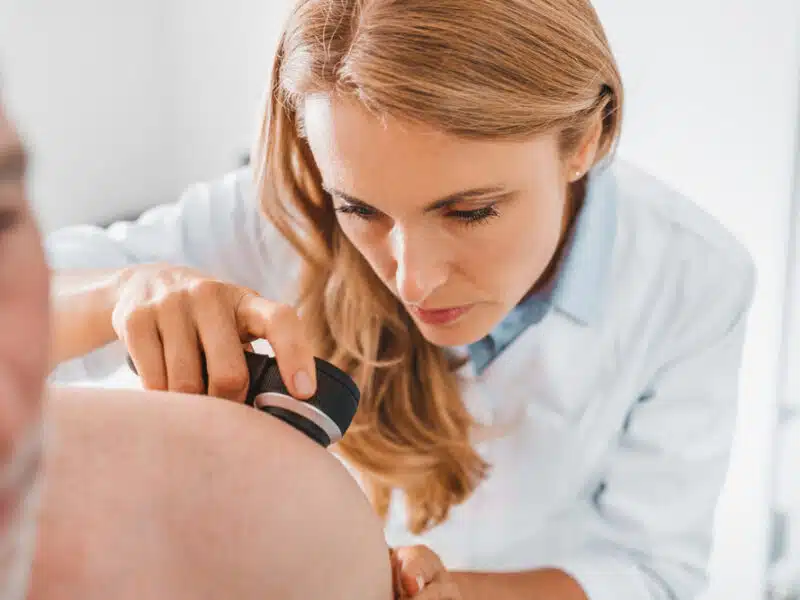
Identifying the Signs: A Comprehensive Guide to Spotting Skin Cancer Early
20th Apr, 2023
A kind of cancer called skin cancer develops when abnormal skin cells multiply uncontrolled. This means you’re more prone to skin cancer on your face, neck, arms, and legs, frequently exposed to the sun.
Skin cancer comes in various forms, although basal, squamous, and melanoma are the most prevalent.
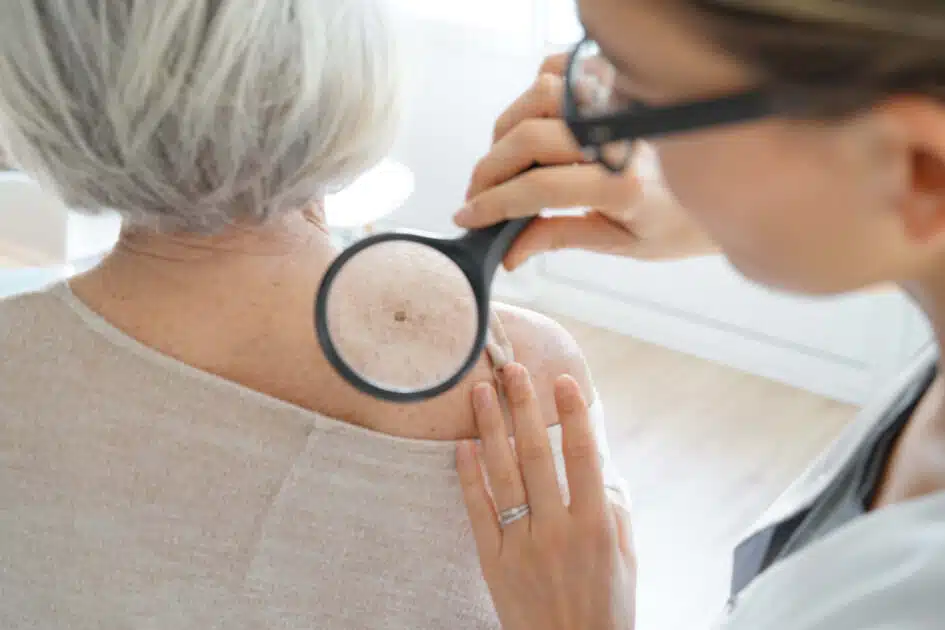
Despite typically being less dangerous than melanoma, basal and squamous cell carcinoma can still be disfiguring and lead to serious health issues if left untreated.
Melanoma is the deadliest and most likely to cause mortality of all kinds of skin cancer. Because it spreads quickly to other parts of the body, early detection and treatment are critical.
Detecting skin cancer early can increase the chances of successful treatment and reduce the risk of complications.
That’s why it’s important to be aware of the common signs of skin cancer, such as:
- A new growth or spot on the skin that doesn’t go away
- A spot or mole that changes in size, shape, or color
- A sore that doesn’t heal
- A scaly or crusty patch of skin
- A mole or spot that itches or bleeds
If you notice these signs, you must immediately see a doctor or dermatologist. They can examine the spot, determine whether it’s cancerous, and recommend the best treatment.
A dermatologist should typically inspect your skin once a year, especially if you have a history of skin cancer or other risk factors. They can also advise you on how to reduce your chances of developing skin cancer by protecting your skin from the sun.

The ABCDEs of Skin Cancer
The ABCDEs of skin cancer are a valuable method for identifying potential signs of skin cancer. Each letter represents a different characteristic of a mole or spots on the skin that could indicate cancer. Here’s a breakdown of what each letter means:
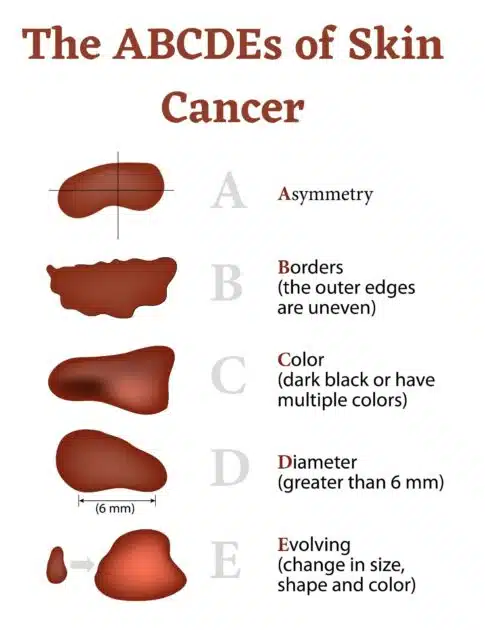
A is for Asymmetry – If one half of the mole or spot doesn’t match the other half, it could be a sign of skin cancer. Normal moles are usually symmetrical.
B is for Border – A mole or spot with an irregular, blurry, or poorly defined border could be a sign of skin cancer. Normal moles usually have a smooth, even edge.
C is for Color – Moles or spots with multiple colors, such as brown, black, red, or blue, could be a sign of skin cancer. Normal moles usually have a uniform color.
D is for Diameter – Moles or spots more significant than 6 millimeters (about the size of a pencil eraser) could be more likely to be cancerous. However, some skin cancers can be smaller than this, so checking for any suspicious spot, regardless of size, is essential.
E is for Evolution – If a mole or spot changes in size, shape, color, or texture over time, it could be a sign of skin cancer. This includes new growth, bleeding, or itching.
To use the ABCDE method, examine your skin regularly and look for any spots that meet one or more of these criteria. If you notice any suspicious spots, make an appointment with a dermatologist as soon as possible.
It’s important to note that not all skin cancers follow the ABCDE pattern, and some melanomas may not show any of these characteristics. That’s why it’s essential to have any new or changing spots on your skin checked by a dermatologist, even if they don’t fit the ABCDE criteria.
In addition to the ABCDEs, there are other warning signs of skin cancer, such as unusual colors or shapes, itching, bleeding, and more. By being vigilant and getting regular skin checks, you can help detect skin cancer early and increase your chances of successful treatment.
Warning Signs of Skin Cancer
In addition to the ABCDEs of skin cancer, there are other warning signs to look out for when examining your skin for potential cancer. These signs include unusual colors or shapes, itching, bleeding, and more.
Unusual colors or shapes can indicate skin cancer because normal moles and spots on the skin are usually a uniform color and shape.
If you notice a spot on your skin with an unusual color, such as pink, white, or red, or a unique shape, such as a star or crescent shape, it’s essential to have it checked by a dermatologist.
Itching can also be a sign of skin cancer, particularly melanoma. If you notice a mole or spot on your skin that is itchy or if you experience persistent itching in an area of your skin, it’s essential to have it checked.
Bleeding is another warning sign asking cancer. A mole or spot on your seeds or oozes could indicate skin cancer. While a small amount of bleeding or oozing is not necessarily a cause for alarm, it’s essential to have it checked by a dermatologist to rule out cancer.
Once you’ve figured out your situation, here’s an article that can help you manage your emotions.
Recommended:
How to Heal Yourself Emotionally: A Powerful 10-Step Guide
Other Warning Signs of Skin Cancer Can Include:

- A spot or mole that is raised or has a rough texture
- A place or mole that feels firm or hard to the touch
- A sore that doesn’t heal within a few weeks
- A business or mole that is painful to the touch
If you notice any of these warning signs, it’s essential to have them checked by a dermatologist as soon as possible. Skin cancer can be effectively treated if discovered early, but if neglected, it can be fatal.
In addition to being aware of these warning signs, it’s essential to protect your skin from the sun and to have regular skin checks with a dermatologist. You can lower your risk of getting skin cancer and improve your chances of finding it early if you do if you follow these instructions.
Where to Look For Skin Cancer
Anywhere on the body can develop skin cancer, but some places are more vulnerable than others. Skin cancer is most common in areas of the body that are regularly exposed to sunlight, such as the face, neck, ears, scalp, chest, arms, and hands.
However, skin cancer can also develop in areas that are not exposed to the sun, such as the genitals, so it’s essential to check all parts of your body regularly.
To check all parts of your body for skin cancer:
Start by standing in front of a full-length mirror and examining your face, neck, and chest.
Use a hand-held mirror to check the back of your neck, ears, and scalp.
Look for moles or spots that fit the ABCDE criteria or any other warning signs of skin cancer.
Next, check your arms and hands. Look at your hands’ tops and bottoms, fingernails, and spaces in between your fingers. Check your arms from your armpits down to your wrists, including the tops and bottoms of your arms.
Check your back by looking in a hand-held mirror at the back of your neck and shoulders. You might enlist a friend or partner to assist you in checking your back and any other difficult-to-reach places.
Finally, check your legs and feet. Look for any moles or patches on the tops and bottoms of your feet as well as in the region between your toes and the soles. Look at your legs carefully, paying attention to the tops and bottoms from your hips to your ankles.
When examining your skin for potential skin cancer, use good lighting and check all areas thoroughly. If you notice any moles or spots that fit the ABCDE criteria or any other warning signs of skin cancer, make an appointment with a dermatologist as soon as possible.
Remember, early detection is critical to successfully treating skin cancer. You may help safeguard yourself from this potentially fatal illness by periodically inspecting all regions of your body and having your skin examined by a dermatologist.
Risk Factors for Skin Cancer
A number of risk factors might raise your chances of getting skin cancer. A light complexion, a history of sunburns, and a family history of skin cancer are some of the most prevalent risk factors.
The link between fair skin and skin cancer is undeniable. Individuals with fair skin possess less melanin, the natural protector of skin against the sun’s damaging UV rays. People with pale skin are more susceptible to the deadly effects of skin cancer than their darker-skinned counterparts, which is a stark reality that cannot be ignored.
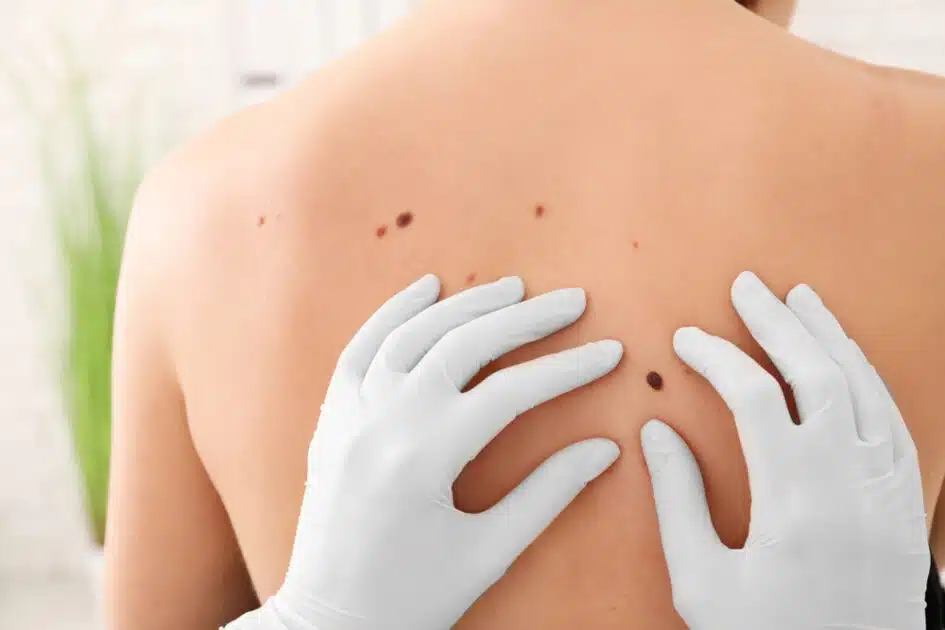
Another important risk factor for skin cancer is a past history of sunburns. Sunburns can damage the DNA in your skin cells, leading to skin cancer development over time. Multiple sunburns over the course of a person’s life increase their risk of developing skin cancer.
The shadow of a family history of skin cancer looms large as a significant risk factor that demands attention. The threat of inheriting skin cancer from a family member is a real and looming danger that cannot be ignored. It’s a sobering reminder that genetics can play a significant role in your health, and understanding your family’s medical history can be crucial in preventing this deadly disease.
It serves as a sad reminder that genetics may have a big impact on your health and that being aware of your family’s medical history can help you avoid developing this fatal condition.
Other Risk Factors for Skin Cancer Include:
- Excessive sun exposure, especially during peak hours of the day
- Tanning bed use
- Exposure to certain chemicals, such as arsenic or coal tar
- Weakened immune system
These risk factors collectively can raise your risk of getting skin cancer. It is critical to be aware of these risk factors and to practice caution, which includes wearing protective clothing and sunscreen, avoiding tanning facilities, and limiting your exposure to the sun during peak hours.
Remember, early detection is key to successfully treating skin cancer.
If you have any of these risk factors or notice any potential skin cancer warning signs, it’s important to schedule an appointment with a dermatologist as soon as possible. Your chances of making a full recovery and lowering your risk of serious health problems can both rise with early care.
Don’t wait until it’s too late – be proactive about your health and take steps to protect yourself from this deadly disease. Don’t hesitate to contact a dermatologist if you have any concerns about your skin since early detection and treatment can make all the difference.
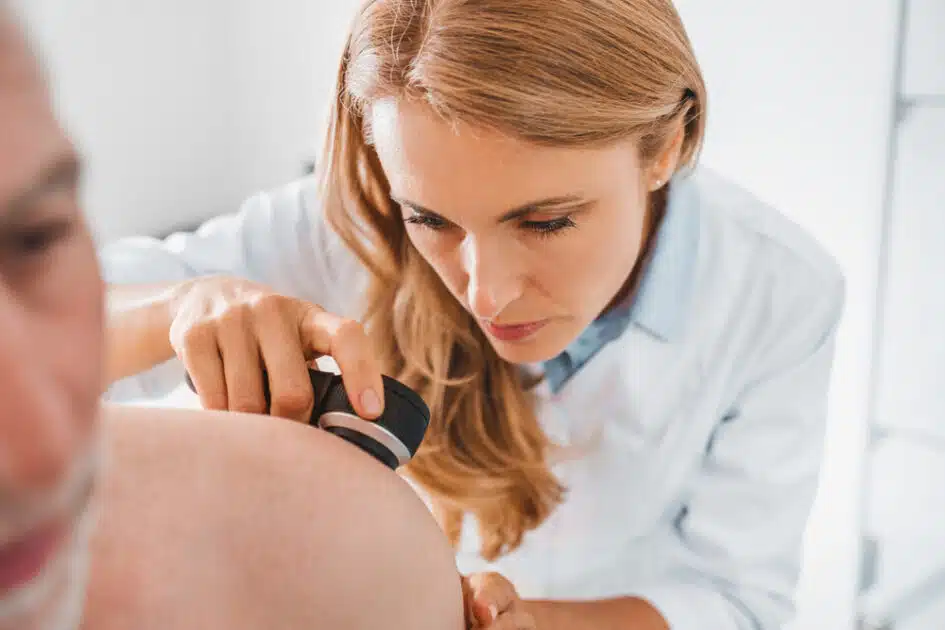
Prevention and Early Detection
- When spending time in the sun, don protective clothing like hats and long sleeve shirts.
- Use sunscreen with a high SPF (at least 30) and apply it generously to all exposed skin
- Seek shade during peak hours of the day (10 am to 4 pm)
- Avoid tanning beds and other sources of artificial UV radiation
- Be aware of medications that can increase sensitivity to the sun, such as antibiotics and some antidepressants
- Drink plenty of water to stay hydrated as dehydration can leave skin more vulnerable to harm.
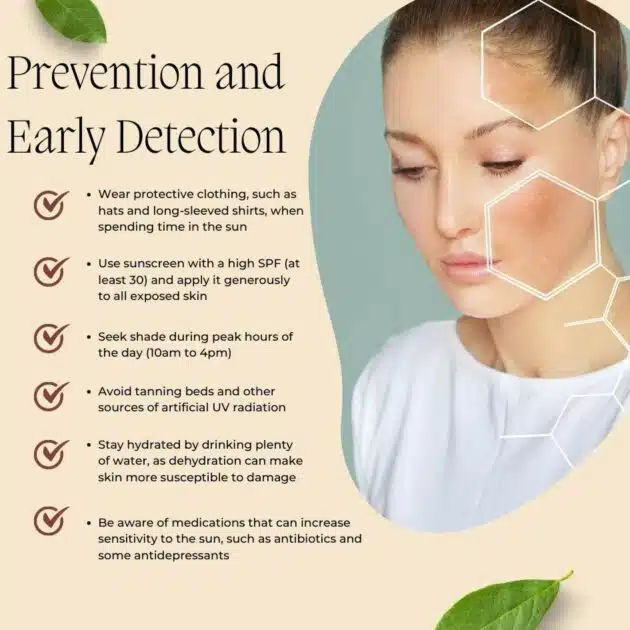
Early Detection
- Perform regular skin checks at home, looking for any changes in moles or other spots on the skin.
- Regular skin checkups with a dermatologist are recommended, especially if you have a history of skin cancer or other risk factors.
- Be aware of the ABCDEs of skin cancer (as discussed earlier), and seek medical attention if you notice any warning signs.
- Consider using smartphone apps or other tools to track changes in your skin over time.
- Regular skin checks with a dermatologist are essential for early skin cancer detection.
Even if you don’t have any visible moles or blemishes, you should undergo a skin inspection at least once a year to monitor any changes in your skin.
By doing this, you may identify any problems at an early stage and take action to stop them from developing into more significant ones.
Remember, prevention and early detection are essential for skin cancer. By taking steps to protect your skin and being vigilant about checking for warning signs, you can reduce your risk of developing this severe disease and increase your chances of fully recovering if it does occur.
Recommended: 5 Holistic Approaches To Mental Holistic Health
The Bottom Line
Skin cancer is a serious condition that, with early discovery, may be effectively avoided and treated. You can protect your skin and identify possible issues before they worsen by being aware of the risk factors and warning signals. It’s important to practice sun safety measures, such as wearing protective clothing and sunscreen and avoiding tanning beds and other sources of artificial UV radiation.
Regular skin checks at home and with a dermatologist are vital to catching potential problems early. Remember, early detection is the key to successfully treating skin cancer and reducing the risk of severe health complications.
By taking care of your skin and being vigilant about potential warning signs, you can help protect yourself and maintain healthy skin for years.















